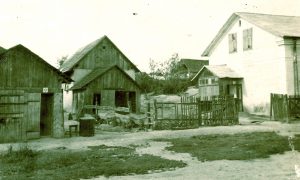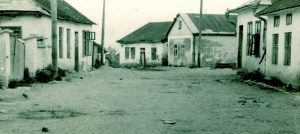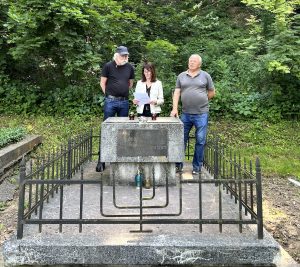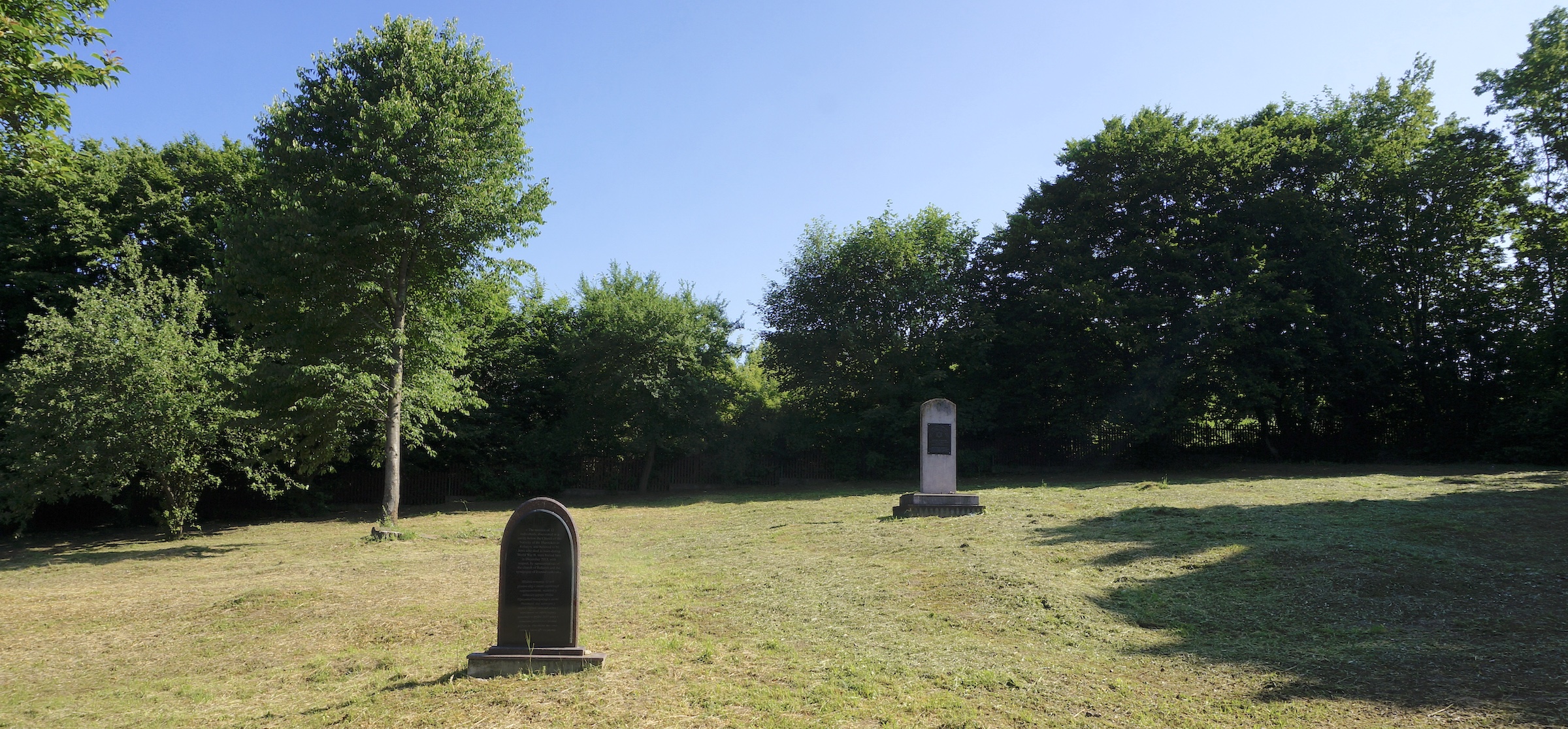Marking 81 years since the liquidation of the wartime Jewish ghetto in Rohatyn, today Jay and I stood with friends before the memorial monument at the north mass grave site – the final resting place of more than 3000 Jewish victims from Rohatyn and the surrounding region, including Burshtyn, Khodoriv, and Bukachivtsi – to recite the prayer El Malei Rachamim (אֵל מָלֵא רַחֲמִים, “God, full of mercy”).
![]() Ця стаття також доступна українською.
Ця стаття також доступна українською.
We were joined by Alex Dunai of Lviv, our friend and a renowned Jewish family history researcher and lecturer, and Ihor Zalypko, both of whom stood with us during last year’s remembrance event at this site. Ihor is a lead engineer at Rohatyn’s “vodokanal” site (behind which the north mass grave is situated), and has been helping us by maintaining the old Jewish cemetery in Rohatyn and both Holocaust mass graves, this one and the one south of city center.
In the presence of these friends, I also read the following speech on behalf of Rohatyn’s Jewish families who could not be here today:
Today we stand witness to the memory of the more than 3,000 Jewish men, women, and children who were executed and buried together at this site north of town center, commonly known as the vodokanal. We are here to remember that 81 years ago today, the final liquidation of the Rohatyn Jewish ghetto began: a series of organized executions and burials at this site starting on June 6 1943 and continuing for two or three days, taking the lives of several thousand Jews from the Rohatyn district. Jewish and Ukrainian memoirs say that smaller executions continued here afterward, killing captured Jewish survivors from earlier aktions, until the end of the war.

Ramshackle buildings with Stars of David in the Rohatyn ghetto.
Source: Katzmann report.
When the ghetto was liquidated 81 years ago, most of the Jewish individuals and families originally from Rohatyn – our families – had already been murdered. Those still alive in the reduced ghetto space were mostly Jews forcibly brought to Rohatyn from surrounding towns and villages. They numbered more than 3000. Some of these Jews anticipated the fate that awaited them and went into hiding in bunkers clandestinely built inside and outside the ghetto. Most did not succeed in eluding capture and were shot upon discovery. A small, unknown number resisted the liquidation with fortifications and weapons smuggled into the ghetto, too few to withstand the onslaught during those days. We know from Jewish and Ukrainian testimonies that ghetto inhabitants were marched to the vodokanal – the area where we stand today – and shot on planks laid over deep trenches, dug days before; there were only a few witnesses.

A wartime street scene in the Rohatyn ghetto.
Source: Katzmann report.
It is painful 81 years later to imagine the violence of those days. It is not difficult to understand that for many Rohatyn Jewish descendants it is still too painful to come today to Rohatyn. We are immensely grateful that some Rohatyn Jewish survivors and descendants came to Rohatyn more than twenty-five years ago to erect this monument as a memorial to the lost, together with the city administration of Rohatyn, local historians and townspeople, and religious leaders of all faiths.
By our coming together today to pray, to reflect, and to honor the memory of the Jewish victims, we build bridges and soothe cross-generational pain. By our presence here together, by our solidarity on this date, at this site, we send a message of tolerance and forgiveness, of remembrance and compassion.
On behalf of my Rohatyn families and Rohatyn Jewish descendants living abroad, I thank you for coming and joining me in remembering. May the memory of the victims bind us together. Baruch Dayan HaEmet.
And, may peace return to Ukraine soon.
After the readings, as always we visited and reviewed all of the Jewish burial sites in Rohatyn. Each of the sites has had wild vegetation trimmed, the new cemetery had dead tree limbs removed, and the mass grave memorials are beginning to show first growth of flowering plants placed earlier this year. A few photos of the sites from today are included here.





